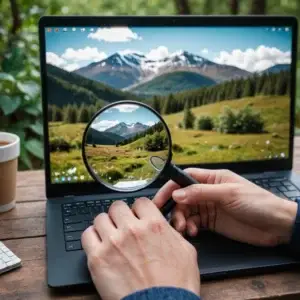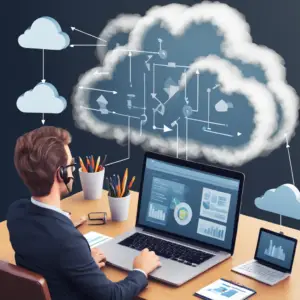
Embracing Green Computing: A Sustainable Future Powered by Energy-Efficient Hardware
In today’s digital age, technology plays an indispensable role in our lives. However, this rapid advancement comes at a cost – a growing environmental footprint that cannot be ignored. The information technology (IT) sector, in particular, has become a significant contributor to greenhouse gas emissions and energy consumption. This is where green computing and energy-efficient hardware emerge as beacons of hope, offering a path towards a more sustainable future.
The Urgency of Green Computing
Climate change and environmental disasters are stark reminders of the urgent need for sustainable practices. Green computing, also known as sustainable computing, addresses this challenge head-on by promoting eco-friendly practices and reducing the overall carbon footprint of technology. It’s a holistic approach that encompasses hardware, software, data centers, and user behavior.
Energy-Efficient Hardware: The Backbone of Green Computing
At the heart of green computing lies energy-efficient hardware. These are meticulously designed components that consume less power while maintaining high performance. Let’s explore some key aspects of energy-efficient hardware and their impact:
- Power-Efficient Processors: The central processing unit (CPU) is the brain of any computer. Efficient processors, like those from Intel and AMD, utilize advanced manufacturing technologies, lower power states, and intelligent power management to reduce energy consumption significantly.
- Low-Power Graphics Cards: Graphics cards are essential for gamers and professionals alike. Energy-sipping GPUs, such as NVIDIA’s Max-Q and AMD’s RDNA2, not only reduce energy bills but also emit less heat, leading to a quieter and more comfortable computing experience.
- Solid-State Drives (SSDs): Traditional hard disk drives (HDDs) are notorious for their energy consumption and slow performance. SSDs, on the other hand, offer faster boot times, lower power consumption, and extended battery life, making them a greener and more efficient choice.
- Compact and Efficient Design: Smaller hardware, such as mini PCs and laptops, consumes less energy during operation. Innovative packaging and cooling solutions further minimize the need for power-hungry fans, contributing to overall energy efficiency.
The Green Benefits of Energy-Efficient Hardware
The adoption of energy-efficient hardware extends beyond cost savings and extends to a healthier planet:
- Reduced Carbon Footprint: Energy-efficient hardware consumes less power, leading to a reduction in carbon emissions from non-renewable energy sources. This contributes to climate action and a greener future.
- Extended Lifespan: Efficient components generate less heat, causing less wear and tear, leading to a longer lifespan. This reduces e-waste and promotes a circular economy.
- Cost Savings: While the initial investment in energy-efficient hardware may be higher, the long-term savings on energy bills make it a worthwhile investment. Companies can also benefit from reduced operational costs by embracing environmentally friendly IT hardware.
The Path to a Greener Future
To fully harness the potential of green computing and energy-efficient hardware, individuals and organizations can take several steps:
- Responsible Consumption: Make informed choices about technology purchases, considering the energy efficiency and lifespan of the products. Practice responsible e-waste management by recycling and reusing old devices.
- Smart Energy Management: Implement power-saving settings on devices and utilize renewable energy sources like solar panels to power computing equipment. Data centers can explore advanced cooling technologies to reduce energy consumption.
- Collaboration and Innovation: Encourage partnerships among hardware manufacturers, software developers, and consumers to promote the development and adoption of eco-friendly energy systems.

Green computing and energy-efficient hardware are not just passing trends but the cornerstones of a sustainable digital future. By embracing these practices and technologies, we can reduce our environmental impact, pave the way for a greener planet, and ensure a brighter future for generations to come. Let us collectively take responsibility for our digital footprint and make conscious choices that protect our planet for the benefit of all.




